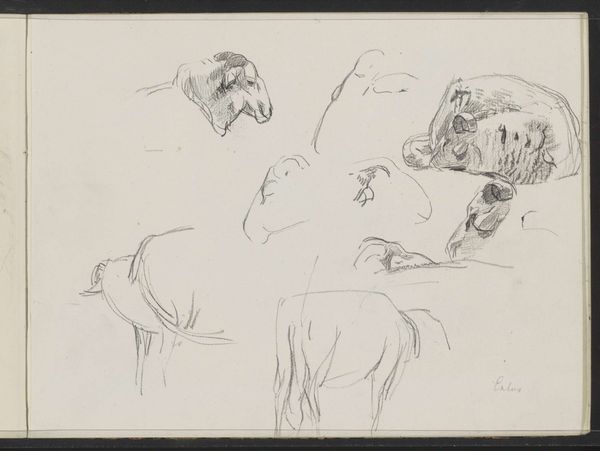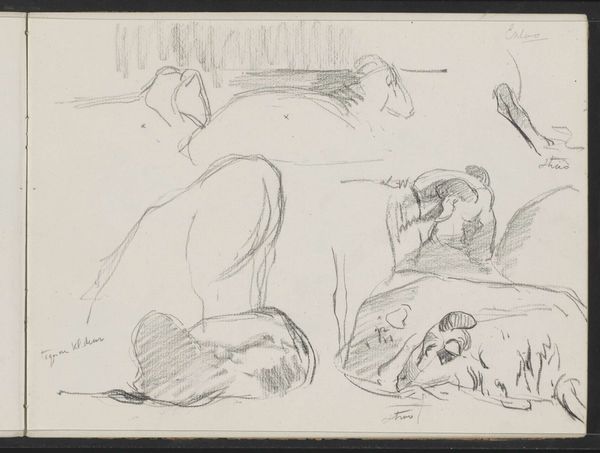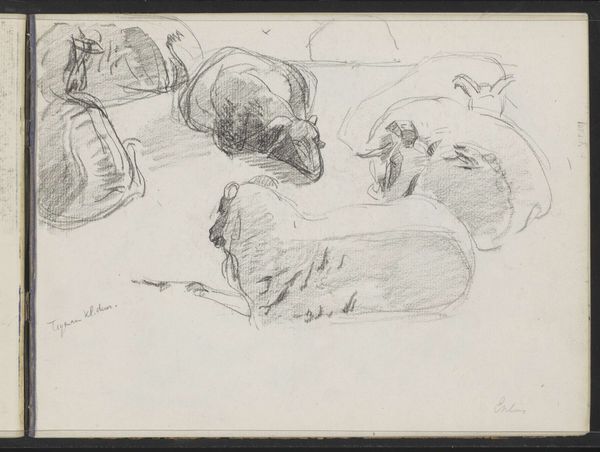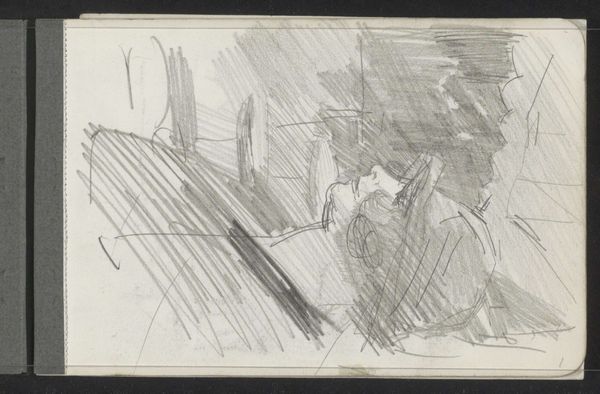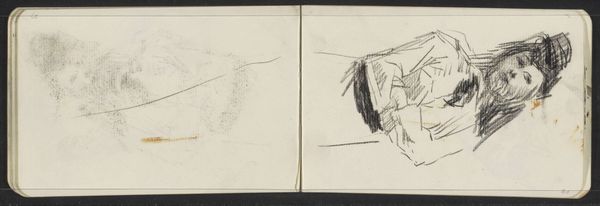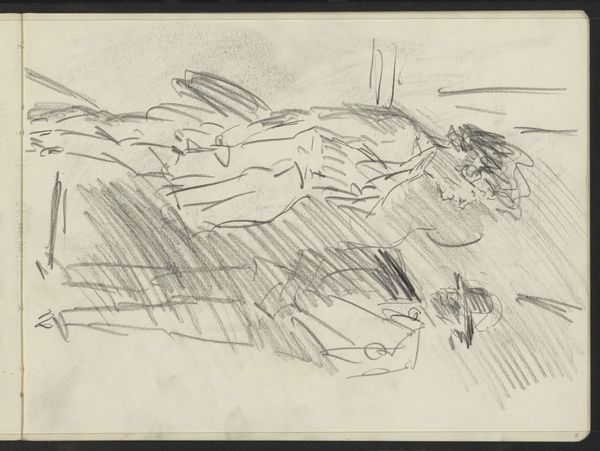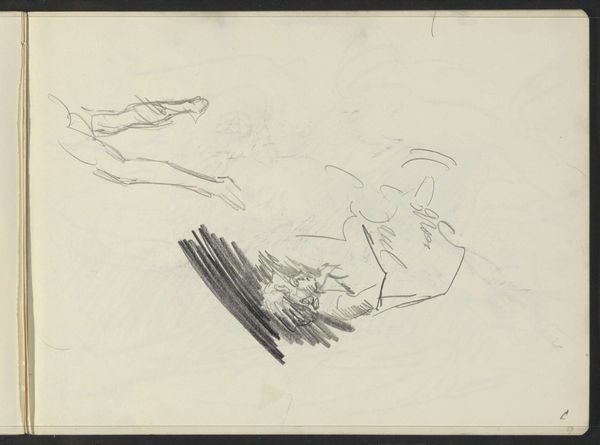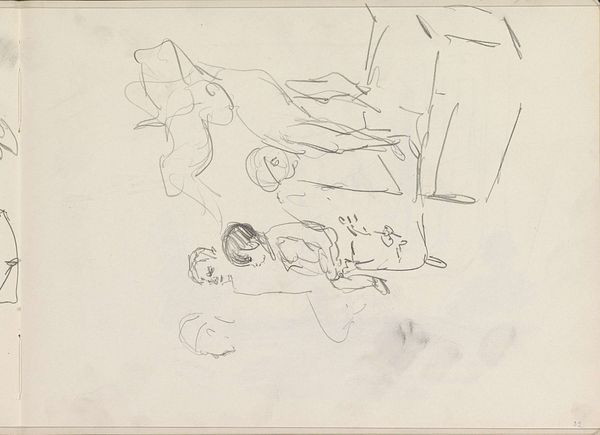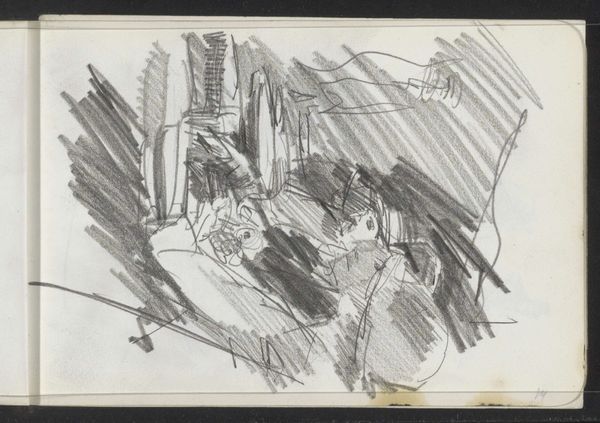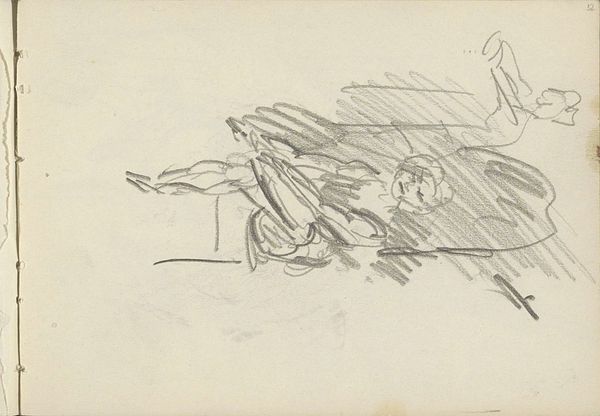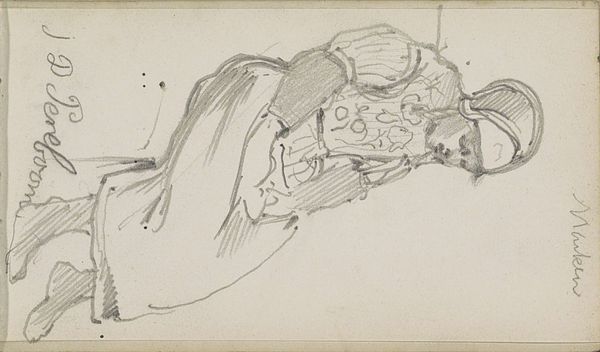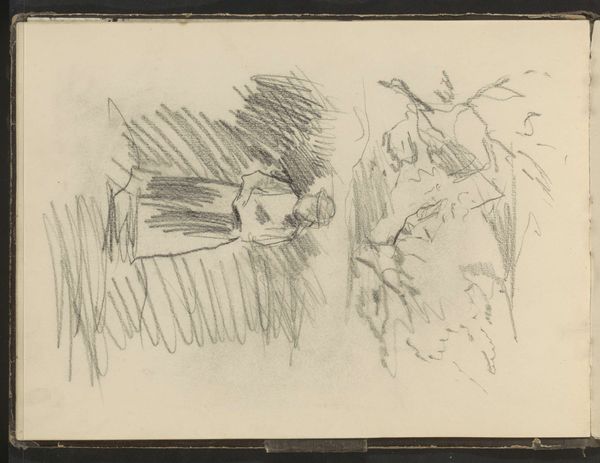
drawing, paper, pencil
#
drawing
#
landscape
#
figuration
#
paper
#
pencil
#
realism
Copyright: Rijks Museum: Open Domain
Curator: Here we have Ferdinand Oldewelt's "Studieblad met schapen te Exloo," a pencil drawing on paper dating from around 1904 to 1912. Editor: What strikes me immediately is the raw simplicity. It's a sketch, really, capturing the essence of these animals in a very fleeting, almost gestural way. Curator: Indeed. And the simplicity belies the labor and social context involved. Oldewelt, known for his realism, often depicted rural scenes. Consider the context: around the turn of the century, life in Exloo, Netherlands, would have been very different. Sheep farming was a way of life. This work captures not just the animal, but also the means by which people survived. Editor: From a formalist perspective, notice how the composition guides our eye. The positioning of the sheep's heads, some sharply defined, others just hinted at, creates a visual rhythm. And the contrast in shading—those areas of dense pencil work versus the almost nonexistent lines—gives depth to an otherwise flat plane. Curator: Precisely, this work represents a connection to the land and its resources. Consider the shepherd's labor—the shearing of wool for textiles, the herding for sustenance. It's all subtly alluded to. These aren’t just animals; they're embodiments of labor. Editor: But also consider the artistry itself. The way Oldewelt uses the pencil, almost caressing the paper to create that soft texture of the sheep's wool. There's an undeniable beauty in that technique, in how he manipulates light and shadow. The materiality of the graphite is used masterfully to render those different textures of wool, skin, and horn. Curator: Absolutely. The medium itself, humble pencil on paper, makes the art accessible. It’s the kind of art meant for everyone, rooted in the reality of working-class existence. It removes the high art from the pedestal and brings it to the daily toil of rural life. Editor: A beautiful encapsulation. It shows how seemingly simple forms can contain a richness of technique. Curator: Indeed. Art provides a window into understanding the way people live and work.
Comments
No comments
Be the first to comment and join the conversation on the ultimate creative platform.
